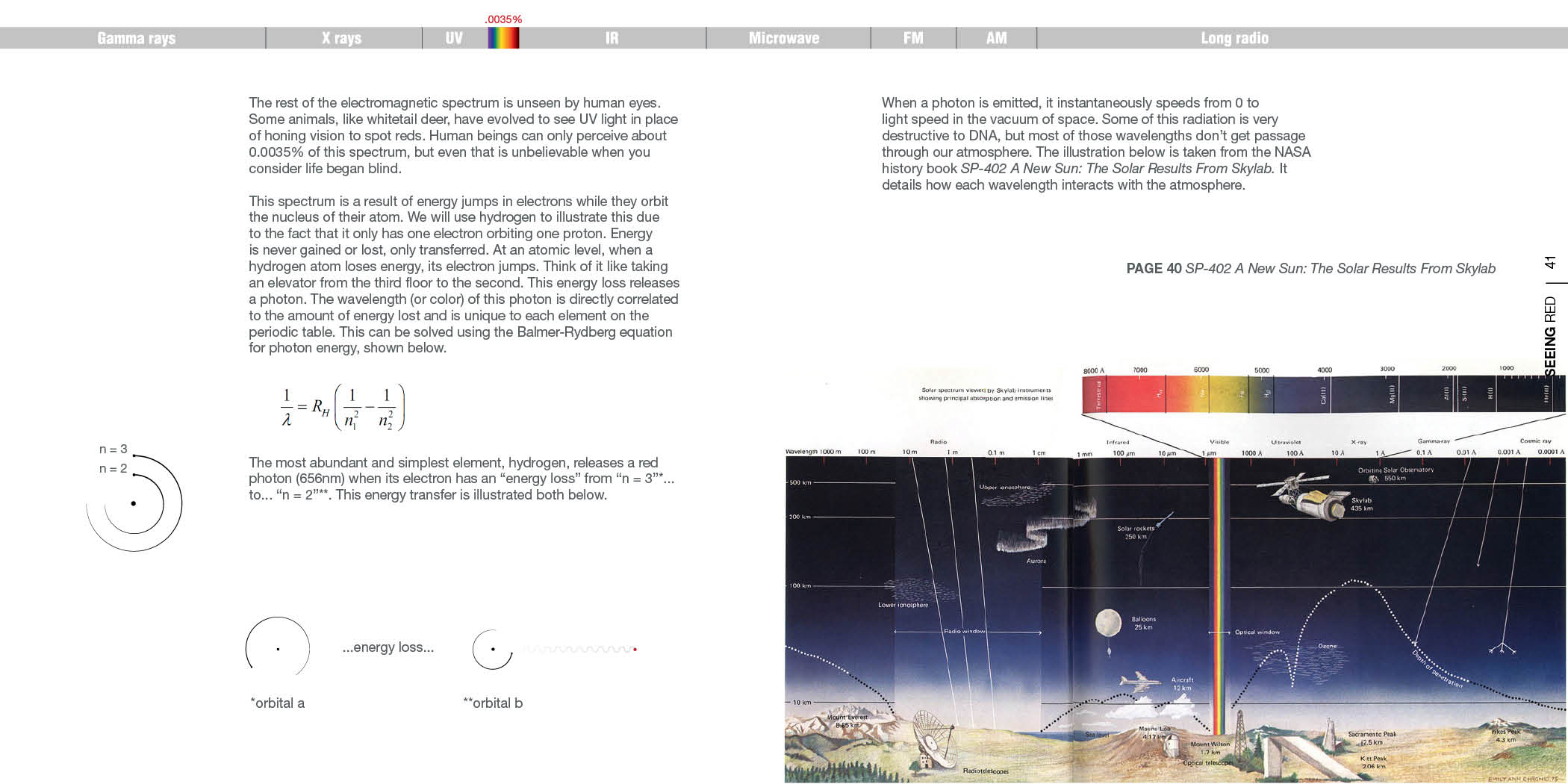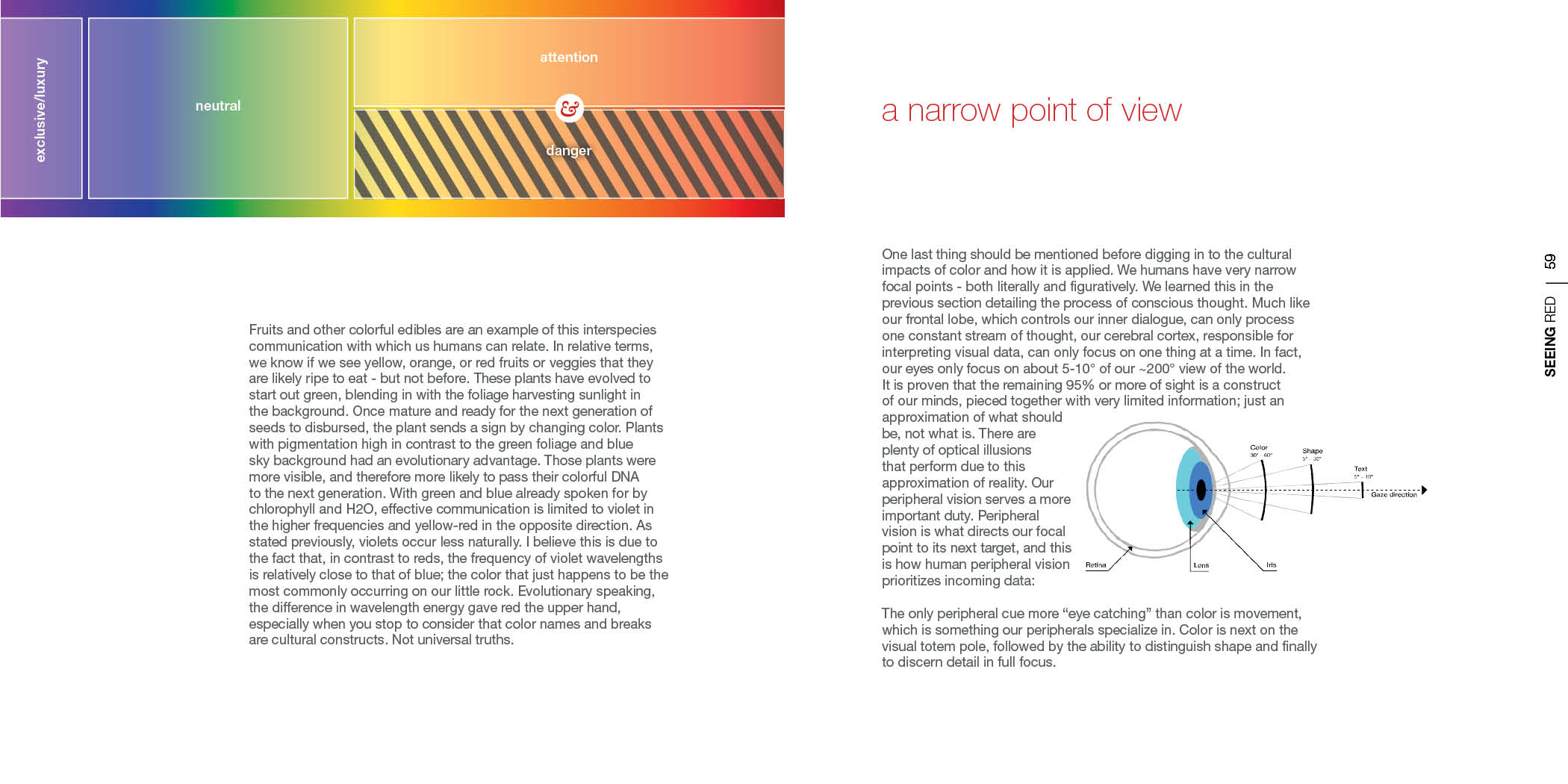As conscious participants in our environment, seeing becomes more involved than the synthesis of light into image. The statement “truth comes from the observation of nature” made by Leonard Koren is doubly appropriate when considering the evolution of conscious thought. Just how did consciousness come to be? Answering this will provide the foundation for our journey into semiotics. Semiotics in a nutshell attempts to explain semiotics in relatable terms. Here we will cover the vernacular and frameworks used in semiotic discussion. Next, we will answer some age-old questions about color, explain the phenomenon of it’s existence, and how we evolved to see the spectrum we know today. This isn’t in an attempt to reveal new meaning. Instead, the goal is to identify the origin of different influences that ultimately dictates our internal narrative.
Seeing Red provides an explanation for meanings associated with red through a combining theories from physics, natural selection, and cognitive science. Some ideas regarding color theory may be rooted in science. While others argue another explanation behind these connotations; it’s simply what we were taught. Either through instruction or life experience. Learned meaning is the arsenal in which visual communicators have available to them. This meaning database is unique to each culture and passed from generation to generation through interaction both with the world and each other. Our collective unconscious decides what connotations survive and those that get snuffed out.
It’s easy to lose sight of where meaning originated. Seeing Red offers an explanation for color theory based in science and history.






